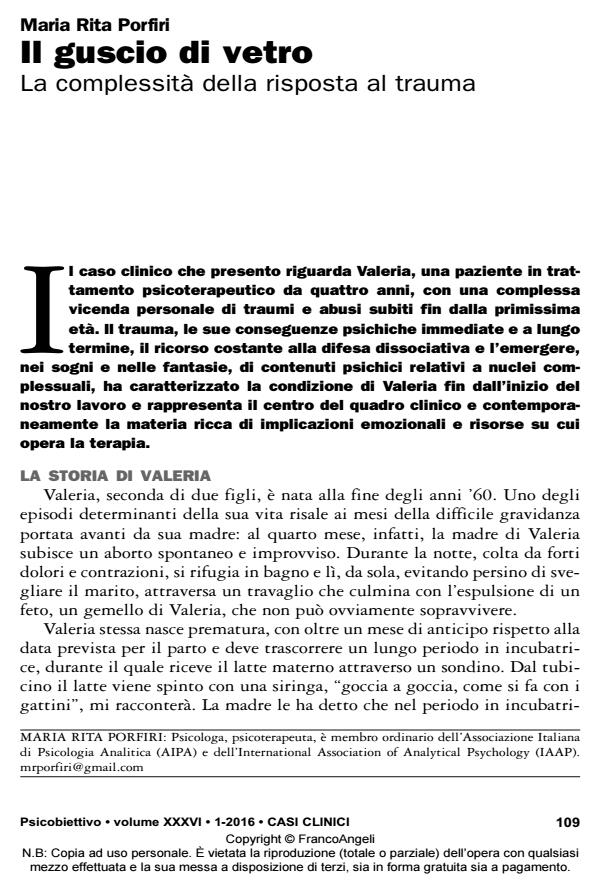The glass shell. A complex response to trauma
Journal title PSICOBIETTIVO
Author/s Maria Rita Porfiri
Publishing Year 2016 Issue 2016/1
Language Italian Pages 14 P. 109-122 File size 111 KB
DOI 10.3280/PSOB2016-001007
DOI is like a bar code for intellectual property: to have more infomation
click here
Below, you can see the article first page
If you want to buy this article in PDF format, you can do it, following the instructions to buy download credits

FrancoAngeli is member of Publishers International Linking Association, Inc (PILA), a not-for-profit association which run the CrossRef service enabling links to and from online scholarly content.
The article focuses on the consequences of the traumatic experiences, both early and cumulative, to which Valeria has been exposed since birth, and who has been following a psychotherapeutic process for four years. Her dissociative defense response to trauma, resulting in difficulty in mentalizing, the prominence of physical abuse in her experience and in her dream representations, are here depicted by means of some key moments of the treatment. The therapy unearthed the activity of a psychic self-cure system, aimed to ensure the survival of the central and founding core of Self, here described according to the model proposed by D. Kalsched (1996). The therapeutic work with Valeria is oriented to the achievement of a deeper and more mature reflection, in order to favor a greater integration of thoughts and affections, of psyche and soma, and finally of states of the Self previously impossible to acknowledge and reach due to the pathological defensive dissociation.
Keywords: Trauma; Preterm Birth; Mentalization; Dissociation; ArchetyPal Inner Self-Care System; Abuse.
Maria Rita Porfiri, Il guscio di vetro. La complessità della risposta al trauma in "PSICOBIETTIVO" 1/2016, pp 109-122, DOI: 10.3280/PSOB2016-001007